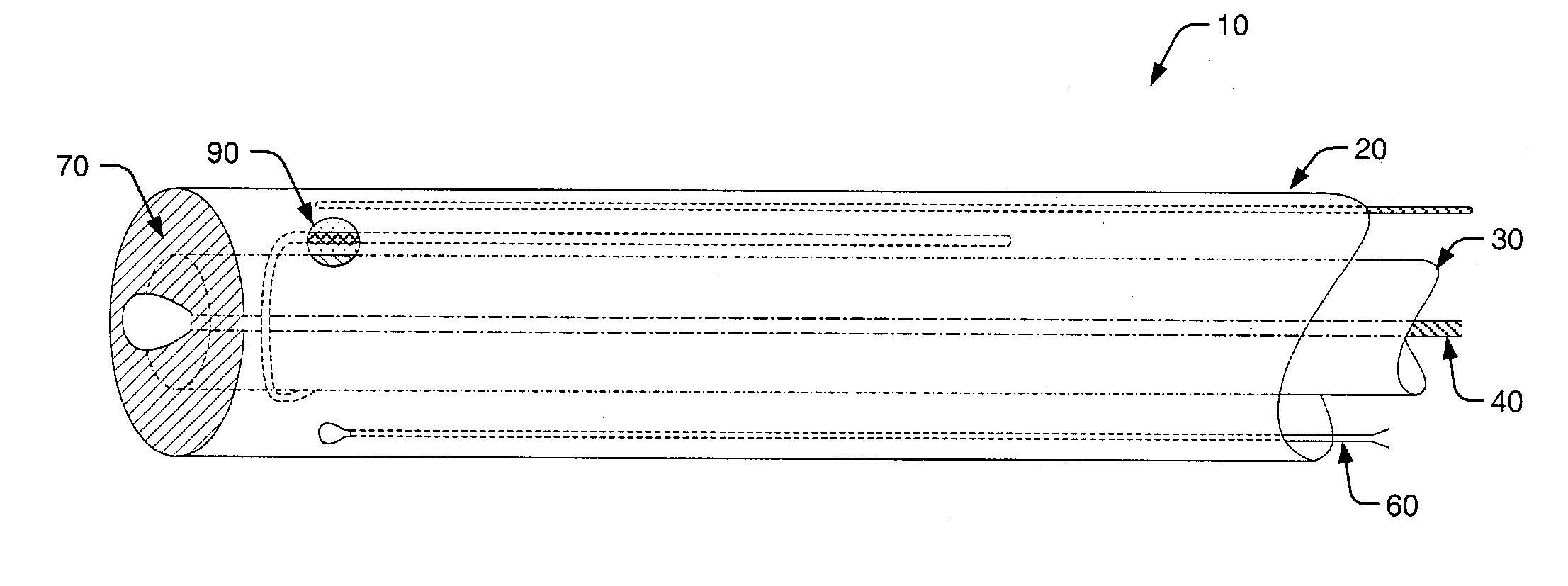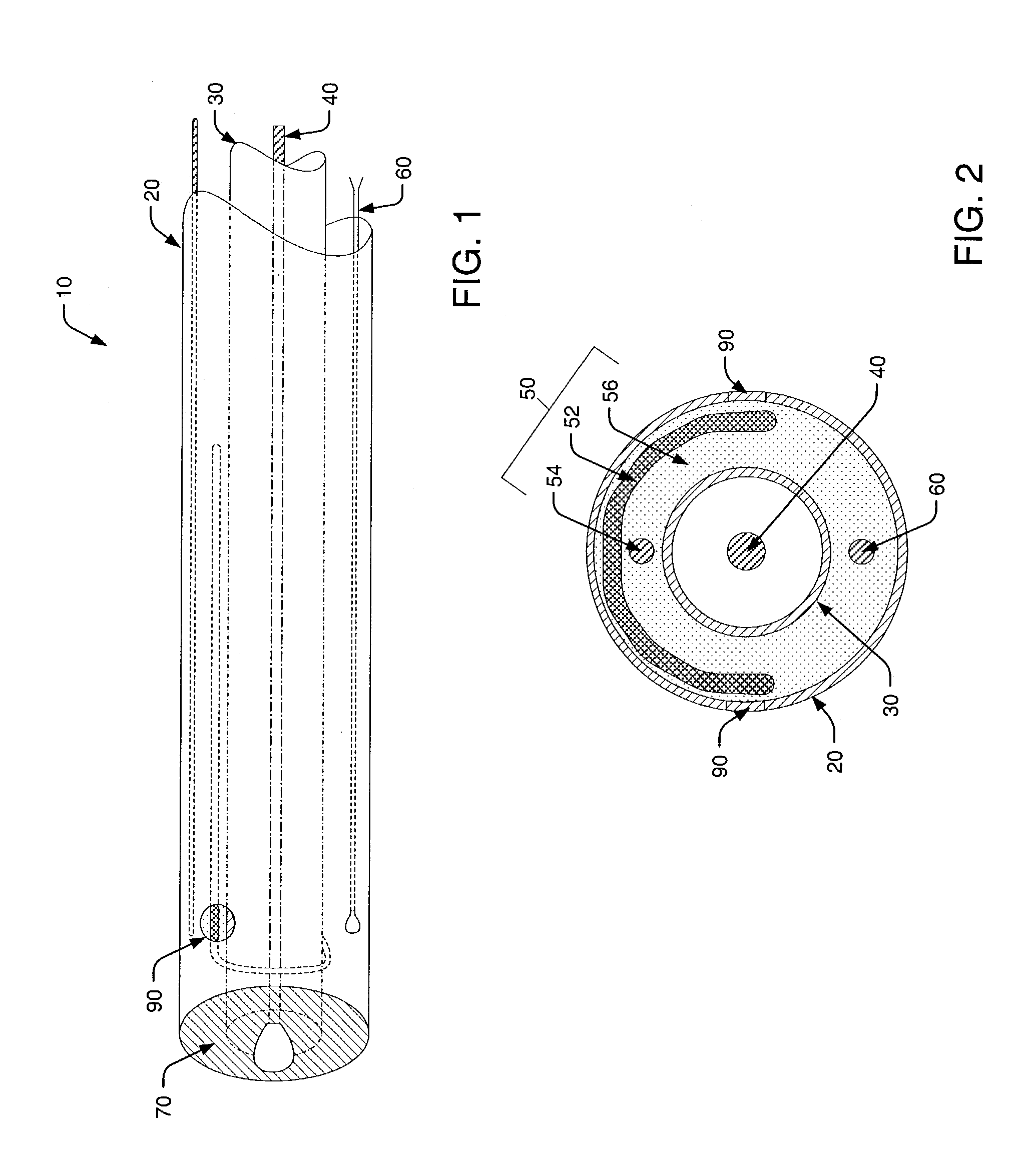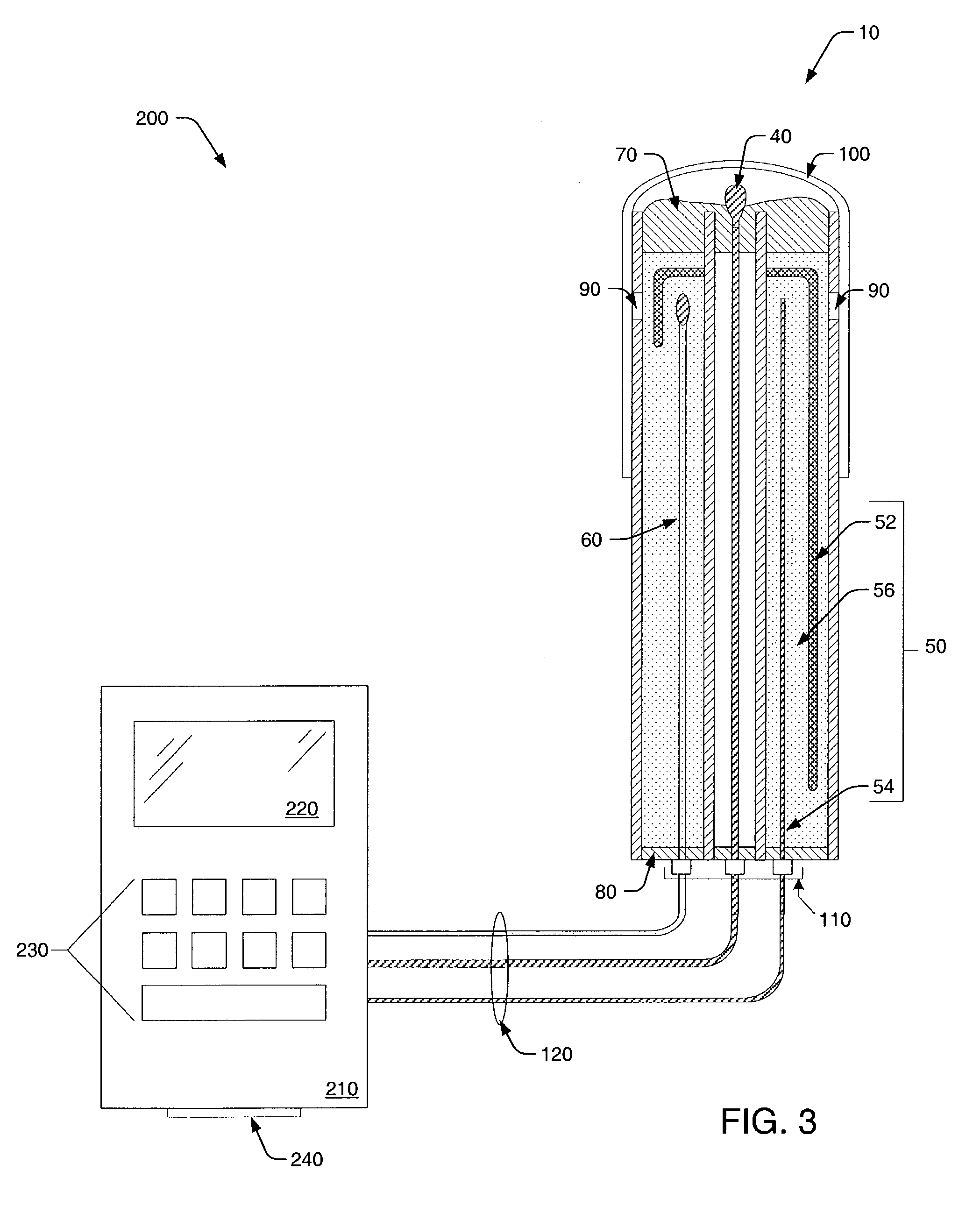System and probe for monitoring pH levels of a sample medium
a technology of sample medium and system, applied in the field of system, method and probe, can solve the problems of inconvenient production and transportation, inconvenient preparation of glass electrodes, and inability to detect ph levels, so as to reduce the preparation time of the probe, and reduce the possibility of contamination
- Summary
- Abstract
- Description
- Claims
- Application Information
AI Technical Summary
Benefits of technology
Problems solved by technology
Method used
Image
Examples
Embodiment Construction
[0042]Turning to the drawings, exemplary embodiments of a pH probe in accordance with the present invention are shown in FIGS. 1–3. In particular, FIG. 1 illustrates a top portion of pH probe 10, while a lower portion of the probe is shown cut away for distinguishing probe elements. In addition, FIGS. 2 and 3 respectively illustrate lateral and longitudinal cross-sectional views of pH probe 10. Therefore, exemplary probe elements and their arrangements within pH probe 10 may be described concurrently in reference to FIGS. 1–3.
[0043]As shown in FIGS. 1–3, a probe housing of pH probe 10 includes outer tube 20 and inner tube 30. In most cases, inner tube 30 is concentrically arranged within outer tube 20, however, alternative arrangements are possible and within the scope of the invention. For example, inner tube 30 and outer tube 20 may be alternatively arranged in a side-by-side, or parallel, configuration. However, such a configuration is generally not preferred since it does not al...
PUM
| Property | Measurement | Unit |
|---|---|---|
| Temperature | aaaaa | aaaaa |
| Temperature | aaaaa | aaaaa |
| Diameter | aaaaa | aaaaa |
Abstract
Description
Claims
Application Information
 Login to View More
Login to View More - R&D
- Intellectual Property
- Life Sciences
- Materials
- Tech Scout
- Unparalleled Data Quality
- Higher Quality Content
- 60% Fewer Hallucinations
Browse by: Latest US Patents, China's latest patents, Technical Efficacy Thesaurus, Application Domain, Technology Topic, Popular Technical Reports.
© 2025 PatSnap. All rights reserved.Legal|Privacy policy|Modern Slavery Act Transparency Statement|Sitemap|About US| Contact US: help@patsnap.com



